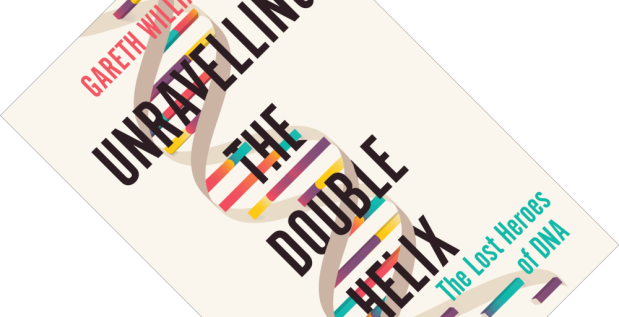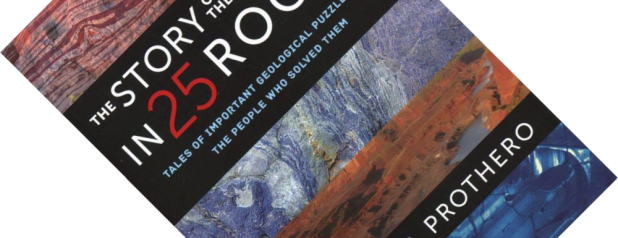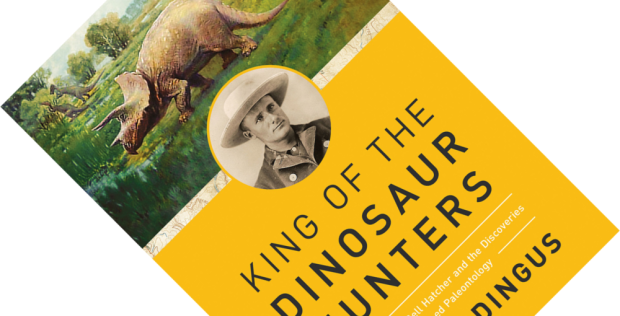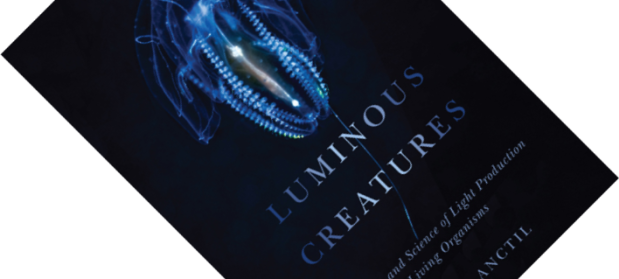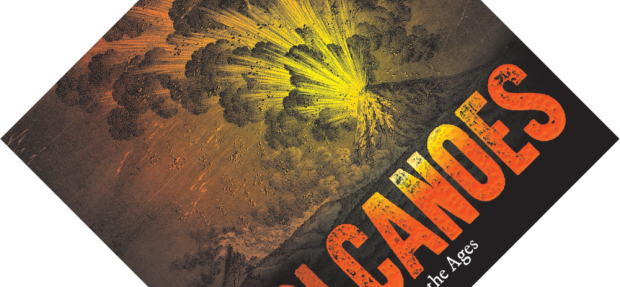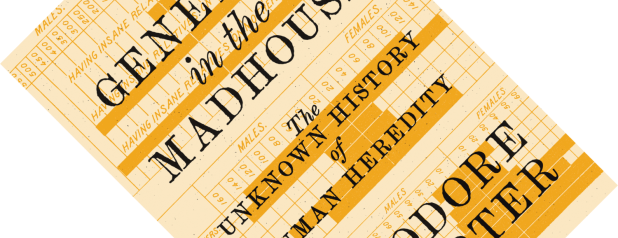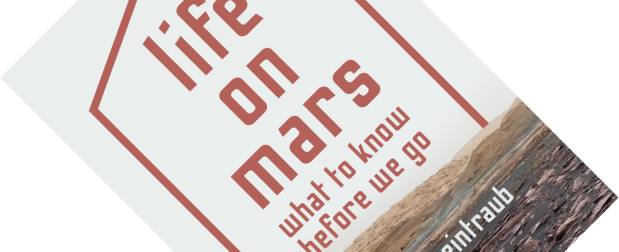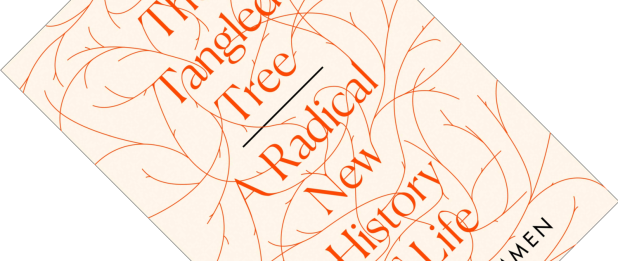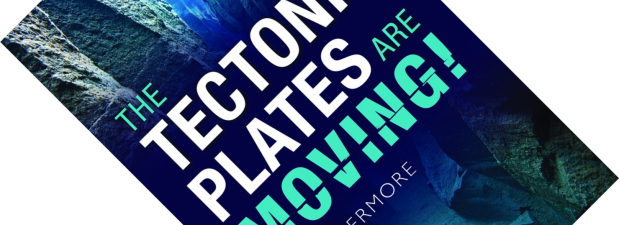Most people will at least be mildly familiar with the story of how the structure of DNA was discovered. Francis Crick and James D. Watson are household names in this story as they went on to win a Nobel Prize. But can you name the third person to share it with them? Most people will also have heard of Rosalind Franklin, but as Gareth Williams shows, so many other people were relevant to this story. Watson and Crick only put the finishing cherry on the cake. Unravelling the Double Helix covers the preceding 85 years of breakthroughs, blind alleys, near-misses, and “beautifully executed bellyflops” by some of the greatest scientists of their time.
history of science
Book review – The Story of the Earth in 25 Rocks: Tales of Important Geological Puzzles and the People Who Solved Them
Judging by the title of this book, you might expect it to talk of 25 remarkable kinds of rocks and minerals. But in the preface, geologist and palaeontologist Donald R. Prothero makes clear that his book looks as much at famous outcrops and geological phenomena. Bringing together 25 readable and short chapters, he gives a wide-ranging tour through the history of geology, celebrating the many researchers who contributed to this discipline.
Book review – The Art of Animal Anatomy: All Life is Here, Dissected and Depicted
Animal anatomy has fascinated artists and scientists for millennia, resulting in a treasure trove of striking images. Veterinary anatomist David Bainbridge here takes on the brave task of curating a birds-eye-view of anatomical artwork that simultaneously delights, educates, and (for some perhaps) horrifies.
Book review – King of the Dinosaur Hunters: The Life of John Bell Hatcher and the Discoveries that Shaped Paleontology
When I think of turn-of-the-20th-century palaeontology, names such as Othniel Charles Marsh and Edward Drinker Cope are the first to come to mind. Their infamous rivalry, known as the Bone Wars, relied heavily on field collectors who did the back-breaking labour of prospecting and quarrying for fossils. Most of these bone hunters are barely remembered, and John Bell Hatcher might very well have remained thus. This meticulous biography by American palaeontologist Lowell Dingus saves Hatcher from obscurity and documents both his hugely successful work as a bone hunter, as well as his later stellar but tragically short-lived career as a curator.
Book review – Luminous Creatures: The History and Science of Light Production in Living Organisms
Beetles do it. As do fish. And squid, sharks, jellyfish, salps, dinoflagellates, and a host of other invertebrates. Bioluminescence, the production of light by living organisms, is one of nature’s most awe-inspiring spectacles and has fascinated humans since time immemorial. Luminous Creatures, written by bioluminescence researcher Michel Anctil, is a chunky book that charts the history of scientific research on this phenomenon by examining the lives and achievements of many of the key players involved. Along the way, it lifts the lid on many of the wondrous details of bioluminescence.
Book review – Volcanoes: Encounters Through the Ages
I will immediately admit that I have retained a boyish fascination with volcanoes. And, as Volcanoes: Encounters Through the Ages shows, I am not alone. Written by volcanologist David M. Pyle to accompany a 2017 spring exhibition at the Bodleian Library in Oxford, this book brings together many historical illustrations from their collections to show how volcanoes have been represented and described over time, and how this has shaped our present understanding. I have not visited the Bodleian Library before, but this book makes me wish I had.
Book review – Genetics in the Madhouse: The Unknown History of Human Heredity
Ask most biologists about the history of genetics and they will likely mention Watson and Crick’s 1953 discovery of the double helix structure of DNA or the work of the monk Gregor Mendel that showed a simple form of trait inheritance. Professor of History Theodore M. Porter contends that there is another, largely forgotten side to this story. Long before words such as genetics and genes had been coined, the fledgeling discipline of psychiatry was recording details of patients in mental asylums, collecting vast amounts of data on human heredity. Genetics in the Madhouse is a deep dive into the archives to reveal this little-known history.
Book review – Life on Mars: What to Know Before We Go
Our planetary neighbour Mars has long fascinated us, and the idea of there being Martian life holds a strong grip on our collective imagination. NASA and others are becoming serious about sending people to Mars. Before we do so, astronomy professor David Weintraub would like to give you this readable history of our fascination with the Red Planet and the research that tries to answer the question: is there life on Mars? (Admit it, you were crooning that David Bowie song there).
Book review – The Tangled Tree: A Radical New History of Life
After I recently finished Carl Zimmer’s new book She Has Her Mother’s Laugh: The Powers, Perversions, and Potential of Heredity, I noticed there was one mechanism of heredity he mentioned only ever so briefly: horizontal gene transfer. Since it does not play a large role in humans, it is understandable he left it aside. And doing it justice would have required almost another book. Luckily, science writer David Quammen is here to give us that book.
Book review – The Tectonic Plates are Moving!
What has plate tectonics ever done for us? Not having studied geology, I have a basic understanding of the movement of earth’s continents, but this book made me appreciate just how much of current geology it underpins. Marine geophysicist Roy Livermore, who retired from the British Antarctic Survey in 2006 after a 20-year career, convincingly shows here that the discovery and acceptance of plate tectonics was a turning point in geology, on par with Darwin’s formulation of evolution by natural selection. To paraphrase evolutionary biologist Theodosius Dobzhansky: nothing in geology makes sense except in the light of plate tectonics.

